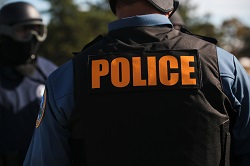In light of the recent events in Paris and San Bernardino, CA, active shooter and terrorism situations have dominated global media and the minds of many Americans. Preparing for and recovering from these incidents is typically seen as the job of local and Federal law enforcement, but local public health is deeply involved in the response and can take a larger role in terrorism preparedness in the future, especially as violence is increasingly seen as a public health issue. Several representatives from different areas of public health shared their experiences preparing for or responding to these events, and shared how these lessons can be replicated elsewhere.
Terrorism and Active Shooter Preparedness and Monitoring
Law enforcement agencies rely on information to inform the potential threat levels in their communities. Local health departments can conduct outreach to communities in a meaningful and authentic way. They are deeply involved with the public and as a result are regularly interacting with their constituents, providing them with a “pulse” on the community. Paul Biedrzycki from the City of Milwaukee Health Department, participates in the city’s Joint Terrorism Task Force, a partnership between various law enforcement and intelligence agencies. His local health perspective provides a different lens on the community, which can be leveraged during information sharing. He recommends that other local health departments get involved in similar partnerships in their cities. Additionally, local health departments conduct social monitoring around disease outbreaks and other health issues, which law enforcement can leverage in their monitoring efforts.
Terrorism and Active Shooter Response
Public health entities are a necessary participant in active shooter or terrorism responses, especially if there is a surge in injuries that must be managed by local hospitals and first responders. Partnerships are critical to supporting response efforts after a mass casualty event. Dr. Atyia Martin, the Chief Resilience Officer for the City of Boston, explained the Boston Health Commission worked very closely with local hospitals, Boston EMS, the police department, the American Red Cross, the Salvation Army, as well as the state health department after the Boston Marathon bombings. Many regions have healthcare coalitions to plan for these events before they occur.
Many local health departments work with their local Medical Reserve Corps (MRC) units. The MRC is a national network of more than 200,000 local volunteers dedicated to the safety, preparedness, and health of their communities. After the November 27 shooting at a Planned Parenthood in Colorado Springs, the Colorado Acupuncture MRC was deployed to the Colorado Springs recovery center. MRC volunteers performed the National Acupuncture Detoxification Association (NADA) protocol, a post-trauma treatment that was given to community members after the September 11th attacks and Hurricane Katrina. In the aftermath of that shooting, the MRC volunteers treated more than 150 people, mostly first responders with this acupuncture.
Outside of acupuncture, MRC units across the country assist their local health departments and emergency management agencies in emergency responses. They are trained and ready volunteers able to provide first aid and other medical care during a surge event. Many MRC units are providing Psychological First Aid training to volunteers and community partners to help responders cope during high stress situations.
Looking Forward
It’s clear that many local health departments are already intimately involved in the response of these traumatic events. Counties and cities across the country are forming valuable partnerships that make coordinating a response a much smoother operation.
Local health departments or emergency management agencies should consider getting involved in partnerships with local law enforcement that deal with preparedness for a terrorism or active shooter situation. These coalitions can help in executing a more seamless response, which is critical in reducing casualties. The FBI has also partnered with local health departments on chemical incident preparedness.
If your local health department is interesting in getting more involved with community preparedness, NACCHO has put together a list of community preparedness resources for local health departments. The Kansas City Regional Association of Public Information Officers also created message maps to be used in the event of an active shooter threat or situation.









